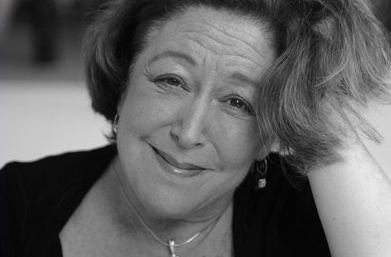
In the mid-1980’s, i had the wondrous adventure of being part of a show that went from…well…it had quite a journey: QUILTERS.
I first encountered it by being cast in the Pittsburgh Public Theatre production , when director Barbara Damashek encountered me on a springtime corner in NYC at 9th Avenue and 42nd Street and, being familiar with my work, asked me to come listen to a bunch of music from this show she just wrote called Quilters, so we went to nearby rehearsal studio and she played me the music over the next two hours and i fell in love with the project….shortly thereafter my agent called me with an offer to
go to Pittsburgh and spend the summer flapping lots of fabric back and forth and singing about pioneer women making quilts!
It went on from there to the Kennedy Center in D.C. , Denver Center Theater and then to an ill-fated Broadway run, for a big, bad city that did not deserve such a dear and marvelous show….but that’s another story…..in fact the entire QUILTERS journey could be a book all its own…..!
Anyway, relating to this morning’s prompt “where stolen secrets reside”…. One of the sections of the quilt we danced and sang about and built onstage was the block called The Secret Drawer.
The Secret Drawer pattern is an old and revered quilt pattern from days long ago, also known as “Spools”, and it was particularly popular in the early American 1900’s, when countless women were making their way across our prairie country land with their brave husbands, to start new lives while building a new country.
The Secret Drawer features a square-in-a-square design with half-square triangles in the corners. Its name comes from the open space under the square-in-a-sqaure which can be seen a sort of drawer, where things female and secretive could be hidden.
And that is what the pattern came to mean for us, as we studied and became those pioneer women we were portraying: the Secret Drawer scene of the show became about babies, birthing and abortion, countless numbers of which were happening every day of those womens’ lives, as they chopped wood, milked cows, built cabins and plowed the fields. Birthing new Americans was one of their duties, and it was a duty attended to vigorously by both the men and women of the prairie….they needed all the extra hands they could get! Even if they had to give birth to those hands themselves.
So, women were “with child” for major portions of their reproductive years, as families grew and grew, adding 12,13,14 or more kids to the family pack. Curious to note: rape was notably common as well, according to some historians, both husband/wife rape and stranger rape as well…..but again, that’s another story to tell.
It’s not surprising that women became tired- more tired than they could bear- from having too many children, and again as history books tell us, women died young, they were so worn out. Voluntarily ending pregnancies was considered evil, irreligious and sinful. Life was too precious, farm labor too scarce, a man needed sons and pliable daughters to help with the crops, etc. So women found ways to secretively take care of their own well-being.
And one of those ways was to hide private, well-used and reliable abortion recipes in places where only they knew where to find them. One of those places was in the “secret drawer” quilt block they would included in their judicious use of daily fabric fragments that came together as the quilts that protected the family from winter cold. Not a scrap of cloth was wasted. Women sewed comfort out of whatever was worn out. And one of those comforts that sustained them was knowing they could find a recipe to end an unwanted pregnancy hidden for their use.
The actual recipes / instructions were not coded into the needlework or the cloth-assembly itself, as the famed Underground Railroad managed to do in the intricate Log Cabin or Country Crossroads quilt patterns, but secret little paper recipes or inked pieces of cloth were folded into the Secret Drawer. And only networks of women knew of this.
Somehow, as networks of women often do, remedies were shared, along with love and the understanding that they could only save themselves the pain of yet another labor.
Herbs, flowers, grains and seeds.
The ending of a life to sustain another life in need of remedy.
And how to mix it into that genuine remedy could be found in The Secret Drawer.

By Laura Fanning
On June 22, 2025
I love this so much. I remember seeing Quilters at the Ahmanson in LA – were you there? What a magical show and you render some of the mysteries and community of that in your piece.
By Evalyn Baron
On June 23, 2025
My journey with Quilters did not include the LA company….my Tony nomination did not include the LA company…